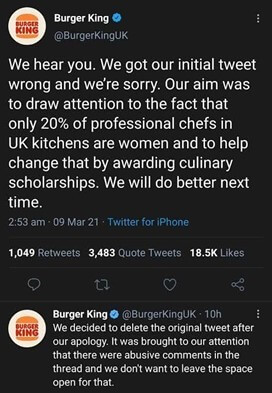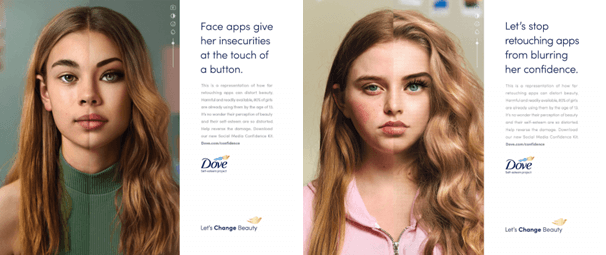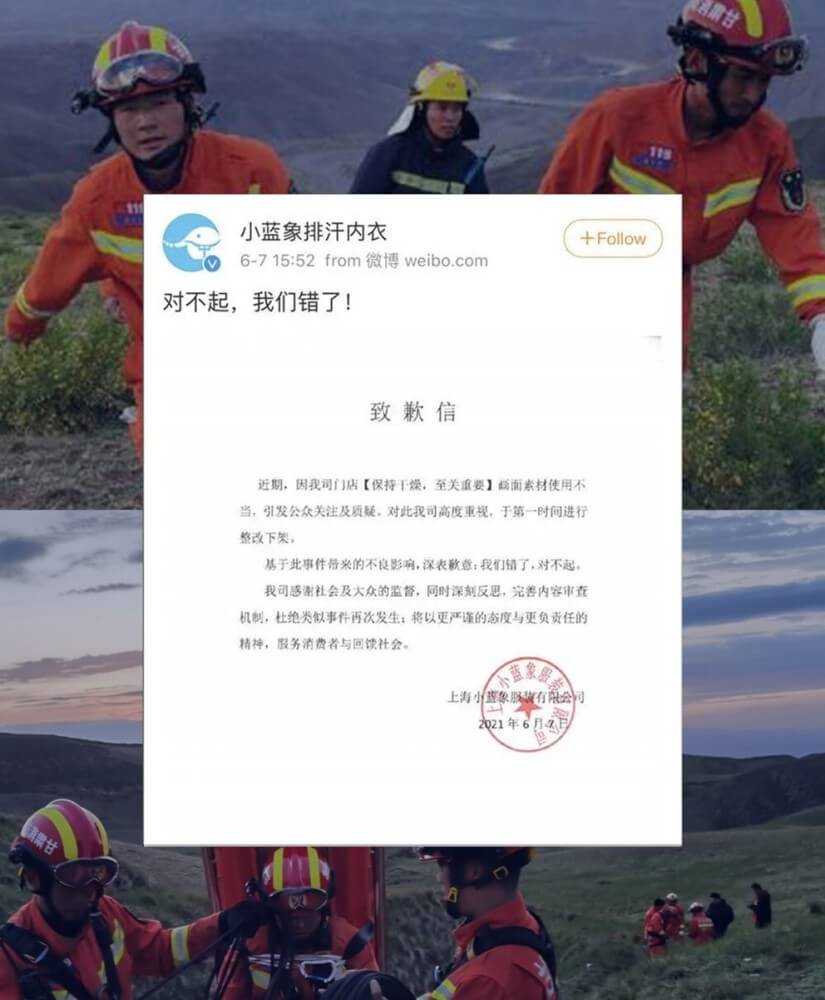In a market dictated by increasing competition as well as demanding and discerning users, standing out requires brands to push the envelope as far as they can. And this cannot be more evident anywhere than in marketing and ad campaigns, where creativity is key. As Ogilvy & Mather (Germany) CCO Stephan Vogel says, “Nothing is more efficient than creative advertising. Creative advertising is more memorable, longer lasting, works with less media spending, and builds a fan community … faster.”
But what does creativity translate to in an era of quick consumption and controversial, viral content? Often, unorthodox, out-of-the-box ideas. Shock and awe, in particular, are emotions that are frequently leveraged in advertising, because they draw instant attention, elicit a visceral response, and create recall value. Add some hot takes on touchy topics, and you’ve really got the buzz going.
But how do you make sure you’re breaking the mould, not setting the whole house on fire? An unconventional ad campaign or marketing attempt can create a huge impact … but it can also backfire. How does a brand make sure that they land a WOW and not a WTF?
Here, we take a comparative look at brands that decided to tackle a tricky topic. Some landed, some didn’t. We consider why, and learn two critical lessons on the way.
Bad execution can obliterate great intentions.
The importance of execution is especially relevant today, when campaigns happen across various platforms and media — in different formats and for different kinds of audiences. What works in one format may need to be tweaked for another, and may not work at all on a third. A full-page newspaper ad can cover a lot more ground and context than a 140 or 280 character tweet, for instance, where the attention span of readers is short.
Before social media, backlash would be controlled and slow to come out — perhaps a stern letter to the editor, but hardly anyone would take to the streets over an ill-executed ad. Now, backlash is large-scale and mobilization is quick. A bad tweet can immediately garner ridicule and go global. So brands need to be extra mindful of how they execute a campaign, and monitor reactions to pivot quickly.
Burger King’s “Women Belong in the Kitchen” Campaign [WTF]
Who doesn’t love a good Burger King Whopper?
But their creative decisions?
Not so much.
Did someone forget about this messed-up ad released on International Women’s Day? Let us remind you.

Why, Burger King?
Well, here’s why … as their thread explains.

The problem? Utter failure of execution.
The first tweet caused a backlash so huge, it drowned out the context that was offered subsequently. A truly tragic thing too, because their core concept was more than a gimmick, with an actual scholarship programme for women that would address the gender gap in the culinary fields. What do they say about putting the money where the mouth is? Well, BK’s campaign was doing just that.
But the company’s poorly thought out decision to roll out the commonly used sexist phrase — “women belong in the kitchen” — as a standalone first tweet, with zero context, left a terrible taste in people’s mouth that even their best burgers couldn’t wipe out. A great example of “shock-value advertisement” backfiring and crash-landing.
For contrast, here’s Zomato India’s spin on the same concept on the same occasion, the very same day, that actually went down well. Why? Because they fixed the blunder that BK made. By delivering the punchline in the same tweet.

As expected, BK had to beat a hasty retreat and put out an apology note:

The damage, unfortunately, was done.
Takeaway:
Great messages and initiatives can be lost in translation if the execution is badly planned. For Burger King, a poorly planned sequence of social media posts led to immense public backlash, even though they were actually trying to do something good. The productive conversation that might have emerged based on BK’s progressive message and actions was lost, as the intended audience either did not see or no longer cared about the follow-up tweets on the thread.
The lesson here is that in a climate that is already rather charged, tongue-in-cheek can quickly become foot-in-mouth in the absence of solid execution. If a concept is founded on a critical context without which the message can be turned on its head, brands have to be careful to make it clear from the get go.
Dove’s “Reverse Selfie” Campaign [WOW]
Good marketing hinges on empathy.
Now, take a look at Dove’s 2021 “Reverse Selfie” campaign — aimed also at starting a conversation around gender and sexism. But unlike BK’s flaming mishap of a campaign, Dove’s attempt landed perfectly and received widespread appreciation. The campaign aimed at combating the adverse impact on young girls and women of the “selfie culture” that relies on highly edited selfies and perpetuates the unnatural beauty standards set by the media.
Dove’s “Reverse Selfie” focuses on how an alarming 80% of girls “distort the way they look online” by age 13 — a sort of “digital distortion” — and why this needs to change. The video shows the digital distortion process in reverse, encouraging people to have #TheSelfieTalk and initiate a body positivity conversation on social media. Conceptually, the campaign is a sequel to the brand’s 2006 film “Evolution” and connected to their “Self-Esteem Project,” which provides guardians with information and resources on the topic along with an option to take a #NoDigitalDistortion pledge. Thus, with every ad it brings out, Dove fortifies its positioning as a champion for this social cause.
The brand also takes an inclusive approach by ensuring that its long-running campaign covers a skin colour spectrum, a subtle but important factor in striking a chord among a diverse audience.


Takeaway:
The key to a successful ad campaign is positive engagement with the target audience. Dove’s “Reverse Selfie” concept was executed flawlessly, the messaging clear right from the start and backed by credible research. It also managed to frame the campaign within other related Dove campaigns, thereby turning a series of ad campaigns into a cohesive movement in its own right.
The most brilliant part? The campaign never even prominently advertised Dove products. Yet, it managed to create a powerful recall value and brand association through the meaningful conversation it sparked. A great example of “message-driven marketing” that highlights a problem, proposes a solution, and then lets an appreciative audience take ownership of the conversation — bringing awareness to both an important cause and to the brand itself.
Good marketing hinges on empathy.
Emergencies and disasters may not seem like the best backdrop for marketing campaigns, but the cold truth is that in a cut-throat world, brands need to constantly think about mindshare. Does doing so have to be tasteless or tacky? No.
And genuine empathy is the key.
Hinos Ad for “Moisture-Wicking Clothing” [WTF]
The difference lies in the intention and how well it is conveyed: Is the brand trying to make an exploitative buck, is it out to help itself at the expense of others? Or, is it trying to help people make their lives better?
Nike’s “Play for the World Campaign” [WOW]
During the peak COVID-19 period in 2020, Nike ran a campaign called “Play for the World: You Can’t Stop Us” that did exceptionally well despite coming at a time when people had bigger worries — or perhaps exactly for this reason.
The campaign addressed how the pandemic was affecting athletes across the globe, and included iconic figures such as LeBron James and Sara Hughes. But this is not what makes the ad. What does, is the brand’s definition of an athlete as “anyone with a body” — featuring a communal, inclusive idea of health and athleticism. It brings everyone in the fold by showing how professional athletes remained active despite lockdown and inviting everyone across the world to come together in spirit.
“Staying indoors” as a collective heroic endeavour was the core messaging during the pandemic, and Nike successfully put a creative spin on it.The campaign addressed how the pandemic was affecting athletes across the globe, and included iconic figures such as LeBron James and Sara Hughes. But this is not what makes the ad. What does, is the brand’s definition of an athlete as “anyone with a body” — featuring a communal, inclusive idea of health and athleticism. It brings everyone in the fold by showing how professional athletes remained active despite lockdown and inviting everyone across the world to come together in spirit.
“Staying indoors” as a collective heroic endeavour was the core messaging during the pandemic, and Nike successfully put a creative spin on it.

Moreover, instead of simply focusing on heart-warming messaging to fuel brand awareness, Nike solved an immediate crisis created by the pandemic — people’s inability to exercise and stay active. The company made its subscription app “Nike Training Club” available for free, allowing people to access workouts and training tips at no cost and from the comfort of their home.
Takeaway:
The trick to marketing during emergencies is for a business to identify the needs they can fulfil and then promote them. Nike does exactly this, and it does it well. The “Play for the World” campaign created a strong, empathetic messaging at a time when people felt alienated, stuck indoors and socially distanced. It offered both contextual value through its free subscription offer and hope through a sense of community.
A great example of an “empathy-driven campaign.” Nike sent out a much-needed message of “we’re here for you; we’re in this together,” by acknowledging the gritty reality and demonstrating how they could improve people’s lives.
Hinos Ad for “Moisture-Wicking Clothing” [WTF]
What’s worse than ignoring a global or national disaster or emergency?
Making light of it.
What’s even worse than that?
Trying to capitalize on it.

Translated, the ad reads:
“Keeping dry is critically important. Some people remember to keep warm but forget about the risk of hypothermia caused by profuse sweating. Choose moisture-transferring and quick-drying underwear instead of those made of cotton. Cotton products increase the risk of hypothermia because they absorb sweat and are hard to get dry.”
What’s wrong with this, you’d wonder.
The context.
*cue ominous music*
Take a closer look at the image. It’s not a stock photo. It is taken from the Gansu Ultramarathon, a May 2021 sporting event in which 21 runners lost their lives, after the weather took a turn for the worse. The image shows runners huddled to combat the deadly cold weather.
Now revisit their copy: “Keeping dry is critically important. Some people remember to keep warm but forget about the risk of hypothermia caused by profuse sweating.”
Tone-deaf doesn’t even begin to cut it.
It’s certainly one way to use “shock” and grab attention.
Not a way we’d ever advise using.
Here’s a quick look at some very understandable reactions on Weibo, where the ad was posted: “Please remove it immediately and apologise. I will not patronise this brand any more.” “They have no limit, no moral integrity.”
Of course, Hinos had to issue an apology for inappropriate advertising: “We have removed the advertisement immediately and we extend our deep apologies for the anguish it caused…”

Takeaway:
If branding is an attempt to make an “emotional connection” with the audience, Hinos approached it by invoking the emotions of disgust. By shamelessly trying to hawk their products on the back of the tragic deaths of many, the brand managed to create a recall value of the worst kind. And the message itself, with its mocking, almost victim-blaming tone, is so blatant that it is hard to pass off as an executional error or an oversight.
An excruciatingly on-point example of newsjacking and trying to profit off a national tragedy. The ultimate cautionary tale for any brand to think several times before rolling out an ad or marketing campaign that relates directly to people’s misfortunes.
—
There’s a fine line between edgy or unconventional and inappropriate or downright unacceptable. Of course, it often seems to be drawn in the sand, shifting constantly. It takes a finger on the pulse of market trends and public sentiments, combined with a discerning eye, to keep a tab on the line. (Also, some common sense and human decency, we should add, given the Hinos debacle.)
Small differences in approach and execution can become the deciding factor, for whether your campaign breaks the internet or ends up breaking the brand’s reputation into irreparable pieces.

